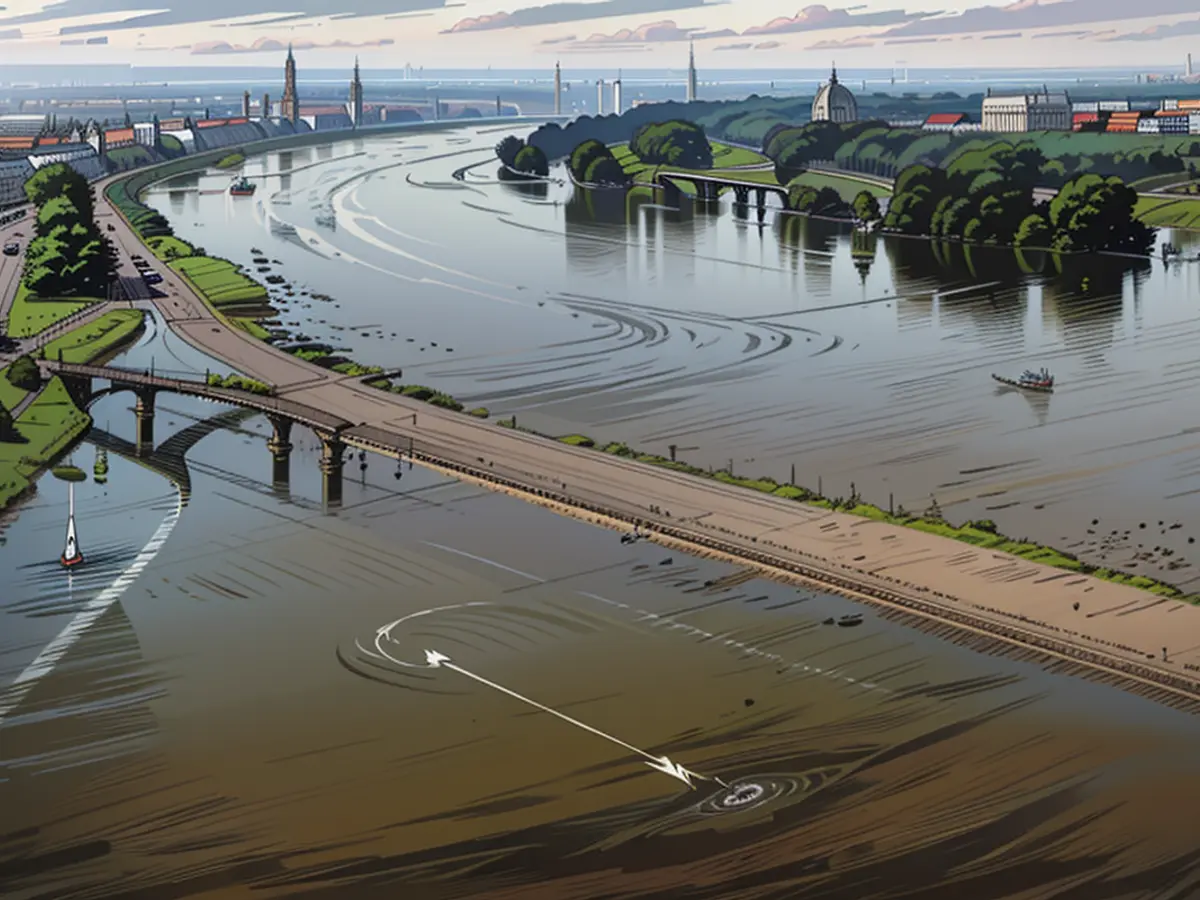Dresden on the brink of issuing a level 3 flood warning.
Amidst the flooding in Poland, Czech Republic, and Austria causing devastation and loss of life, Germany has thus far managed to stay relatively unaffected. However, water levels are on the rise in Germany too. In Dresden, there's anticipation of reaching warning level 3 during the day, while Brandenburg is gearing up for potential worst-case scenarios before their state election.
The water levels in Dresden and Schöna (Sachsen Schweiz-Osterzgebirge) are continuously increasing. As per state flood center data, Dresden hasn't reached warning level 3 yet, with a morning reading of 5.98 meters, just short of the six-meter mark which activates level 3. According to current predictions, this mark should be surpassed by morning.
Warning level 3 means that urban areas, adjacent streets, and railway tracks may get flooded. At level 2, mainly agricultural or forestry areas, gardens, and other green spaces get flooded, along with potential damage to individual buildings.
Expected drop in Schöna water levels overnight
At Schöna, the level 3 threshold value has already been surpassed, with a 6.54-meter water level measured at dawn. As per estimates, the water level should continue to rise during the day before dipping slightly on Thursday evening. It's highly unlikely that the top warning level of seven meters will be attained.
Environment Minister Wolfram Günther stated that while a large-scale flood isn't predicted, some Czech floodwater is entering the Elbe. He added that the water levels are lower than initially feared, but not a total clearance.
Brandenburg is proactively preparing for a possible influx of water in the coming days. Crisis teams in the eastern federal state remain on high alert as citizens work diligently in protecting their homes from anticipated flood damages on the Oder.
Woidke: Be Prepared for Worst-Case Scenarios
Brandenburg, with an upcoming state parliament election on Sunday, has Minister President Dietmar Woidke urging caution. He said during the Tuesday live broadcast "rbb24 - Ihre Wahl: Der Kandidatencheck" on RBB television, "We hope for the best, but prepare for the worst." Reflecting on Ratzdorf, which was severely damaged during the 1997 flood, he highlighted improvements made in infrastructure, including a new dyke and sheet piling provisions.
AFD's faction leader and top candidate Hans-Christoph Berndt believed that while climate change should not be overlooked, immediate priority should be given to maintaining and safeguarding dykes against potential beaver damage.
In the South and East of Bavaria, the situation is gradually improving. The water levels of the Sempt in Erding district and Danube in Passau have dropped below the second-highest warning level 3 threshold values. However, the Isar water level in Low Bavaria is still on the rise, with Landshut exceeding the warning level 3 threshold value.
On Tuesday, the German Weather Service announced no imminent heavy rain or temperature drop in the forecast.
More than 20 lives have been lost in neighboring countries to the flooding.
Extensive flooding can still be seen in Poland, Czech Republic, Slovakia, and Austria. Authorities anticipate further days to provide a final clearance, with more than 20 reported fatalities across these countries. In the Czech Republic, several individuals remain missing, and the military is offering assistance in the affected areas.
In Eastern Austria, emergency situations have been declared due to persistent rainfall over the past few days. A significant number of buildings have been evacuated, and many roads have also been closed due to floodings.
The German Red Cross plans to send additional aid to Poland on Wednesday, including 2500 beds and 500 blankets. The situation remains unstable, particularly in southwestern Poland, with numerous cities and towns experiencing flooding, dams and bridges being destroyed.
In Dresden, the city is closely monitoring the rising water levels, with estimates suggesting that warning level 3 will be surpassed by morning. Once reached, urban areas, adjacent streets, and railway tracks may be flooded.
Despite some Czech floodwater entering the Elbe, Environmental Minister Wolfram Günther mentioned that the water levels are lower than initially feared, though still causing concerns and preparations in Brandenburg.






